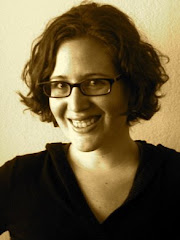Tuesday, October 5, 2010
Natalie Coughlin and Pilates
Enjoy!
Podcast Links:
Q and A with Natalie
Pilates exercises with Natalie
Extra Links:
How Pilates helps with swimming
Total Immersion Swimming
USA Swimming
FINA
Sunday, September 12, 2010
PILATES AND MORE FOR STRONGER BONES WITH ANGELES RIOS AND JOHN DONADINI
balance, flexibility, and core strength. In addition, appropriate integration of loading exercise, such as jumping, plyometrics and strength training, can dramatically help the process. With the
knowledge that the combination of the two can produce unwavering results, we bring you the best of both worlds all wrapped into one!
Answers to Common Questions
Why should I improve my core strength?
The lower spine and upper thigh bones can soften with osteoporosis or osteopoenia, which may decrease your core strength. Hence, including a core strengthening program, resistant training and impact (ex. jumping) program that places stress on these areas and surrounding muscles (hip flexors and extensors, internal and external rotators, and abdominal muscles) is essential.
What are the core muscles?
The core muscles includes the deepest abdominal muscle transversus abdominus, which acts as a corset around your torso. In addition, the core muscles also include the multifidi (one of the many spinal muscles), diaphragm, and the pelvic floor. The general public tends to add the butt muscles and other abdominal muscles to this definition, but the core muscles do not move the body. Instead they act as stabilizers keep joints and surrounding tissue from extra wear and tear. These muscles (the butt and other abdominal muscles) are important additions to the core muscle for maintaining balance and lumbar pelvic stability. Deep exhalations is one way to activate the core muscles so please remember to take long deep breaths in Pilates.
Why balance training?
Since resistance training studies have shown only a 5% increase in bone mass for those with osteoporosis, it is important to include fall prevention exercises.
Why Flexibility?
Maintaining and improving your flexibility may help you maintain proper biomechanics and postural control.
What movements should I avoid if I have osteoporosis or osteopoenia?
Bending the back forward (spinal flexion) and excessive twisting (spinal rotation) of the back is not recommended since these movements may increase the likelihood of fractures in the spine, particularly the thoracic region (the vertebras that connect to your ribs).
Mondays and Wednesdays, 5:15 pm – 6:45 pm
Location:
Pilates and Beyond Studio
Contact:
Contact Breann Mitchell at 415.901.9368 or
Pilates@sfbayclub.com
Class Includes:
Initial Assessment the week of August
30th (appointment to be scheduled
separately by contacting Breann Mitchell)
90 minute classes:
45 minutes of Pilates Training with
Angeles Rios and 45 minutes of
Strength Training with John Donadini
150 Greenwich Street, San Francisco, CA 94111
415.433.2200
Wednesday, September 8, 2010
Born To Run
As a Pilates Instructor, I see a lot clients with weak arches and poor balance control while working out barefoot. In fact, one of the first exercises, I will work on with a client is called "footwork," exercises that places the feet in different positions, which works different muscles along the lower extremities. Through this work, I can immediately observe muscle imbalances and compensation in a client and figure out what exercises I will go over during the rest of the session.
I am not sure if barefoot running or running in Vibrams is for everyone, but I think addressing foot strength and improving proper biomechanics could translate to runners moving more efficiently and experiencing less injuries while running.
Pilates and Running Link
Friday, February 5, 2010
I will be teaching a new workshop at the San Francisco Bay Club
We developed this workshop after Brian had a client who was experiencing a plateau in her training and thought trying out Pilates would help her jump out of it. After I trained her for a session, he noticed how his client improved her form and was able to progress further in her athletic training. From this experience, it seemed obvious that we should work together to develop a workshop mixing the two methods so more people could have access to the synergistic power of Pilates and Athletic Training. The workshop will focus on strengthening muscles that produce powerful movements and those that help stabilize the joints in the trunk region that, if not addressed, can lead to excessive wear and tear and limit the range of power production in movement. The Pilates part of the workshop will use postural cuing, core, powerhouse training, flow and breath, which will help improve one's posture, core strength, and stability while performing global movements in athletic training. In addition, because one of the key principals in Pilates is breath, it also known as a meditative movement, which may help relax your body and mind when performing exercises. I encourage those who are in a plateau in their resistant training, athletic endeavors or are interested in building a balanced body through local and global strength training but don't have time to take separate classes to give this workshop a try.
Pilates and Athletic Conditioning
02/08/10 - 03/21/10
Join Brian Hannah and Angeles Rios for a unique fusion of Sports Conditioning and Pilates. This never before seen class will have you working on your strength, power, balance and agility while at the same time improving core strength and posture. The combination of these two workouts will not only have you burning up calories, but will also lead to an increase in functional strength.
This class includes:
Twelve 90 minute classes (45 minute weight training, 45 minute Pilates)
Pre/Post Polar Body Age measurements charting your results
Days and Times:
Mondays and Wednesdays6:15 pm - 7:45 pm
The cost is $480 for members
Drop in rate $45 (If space permits, 6 person max).
For more information, please contact:
Breann Mitchell
415.901.9368
bmitchell@sfbayclub.com

